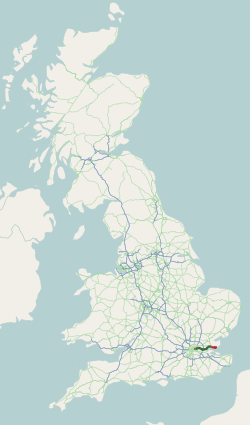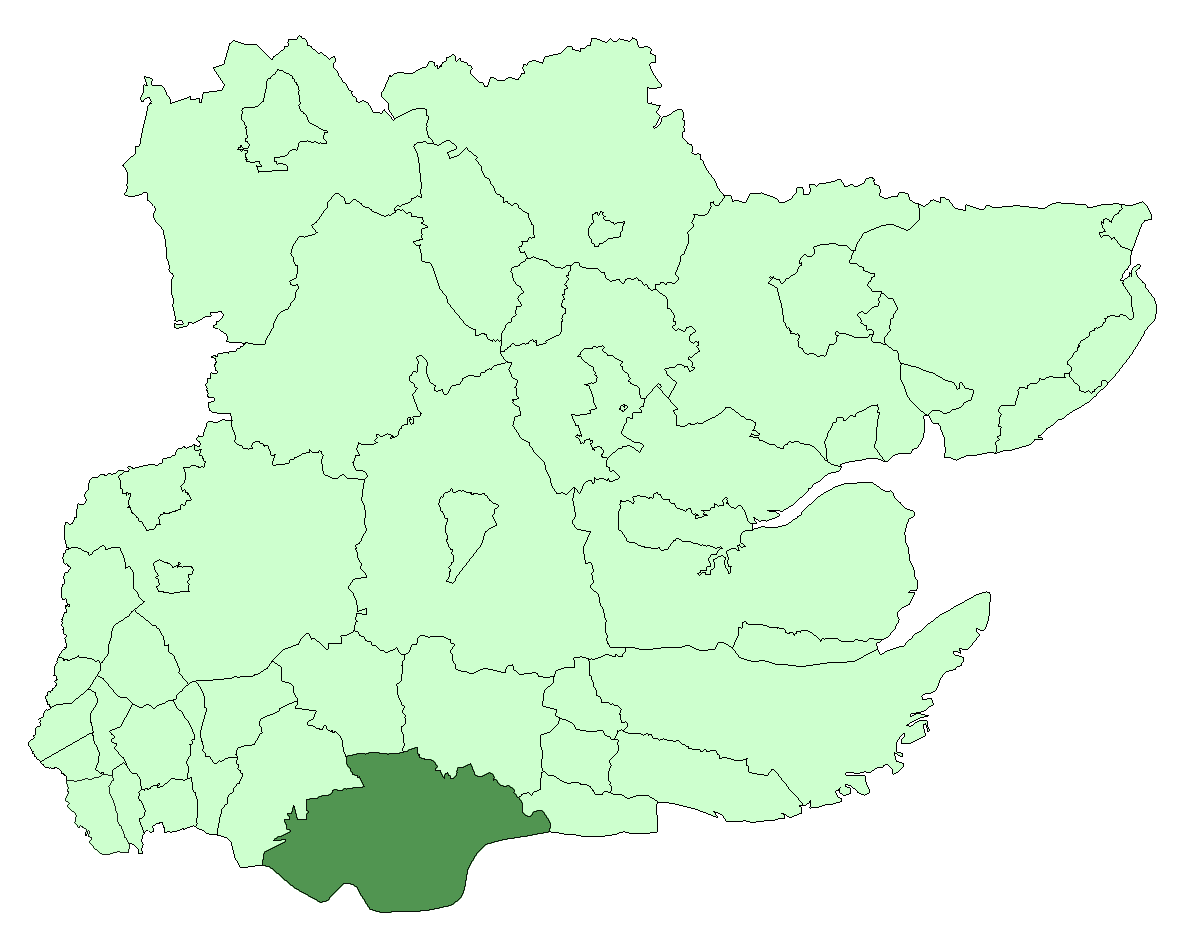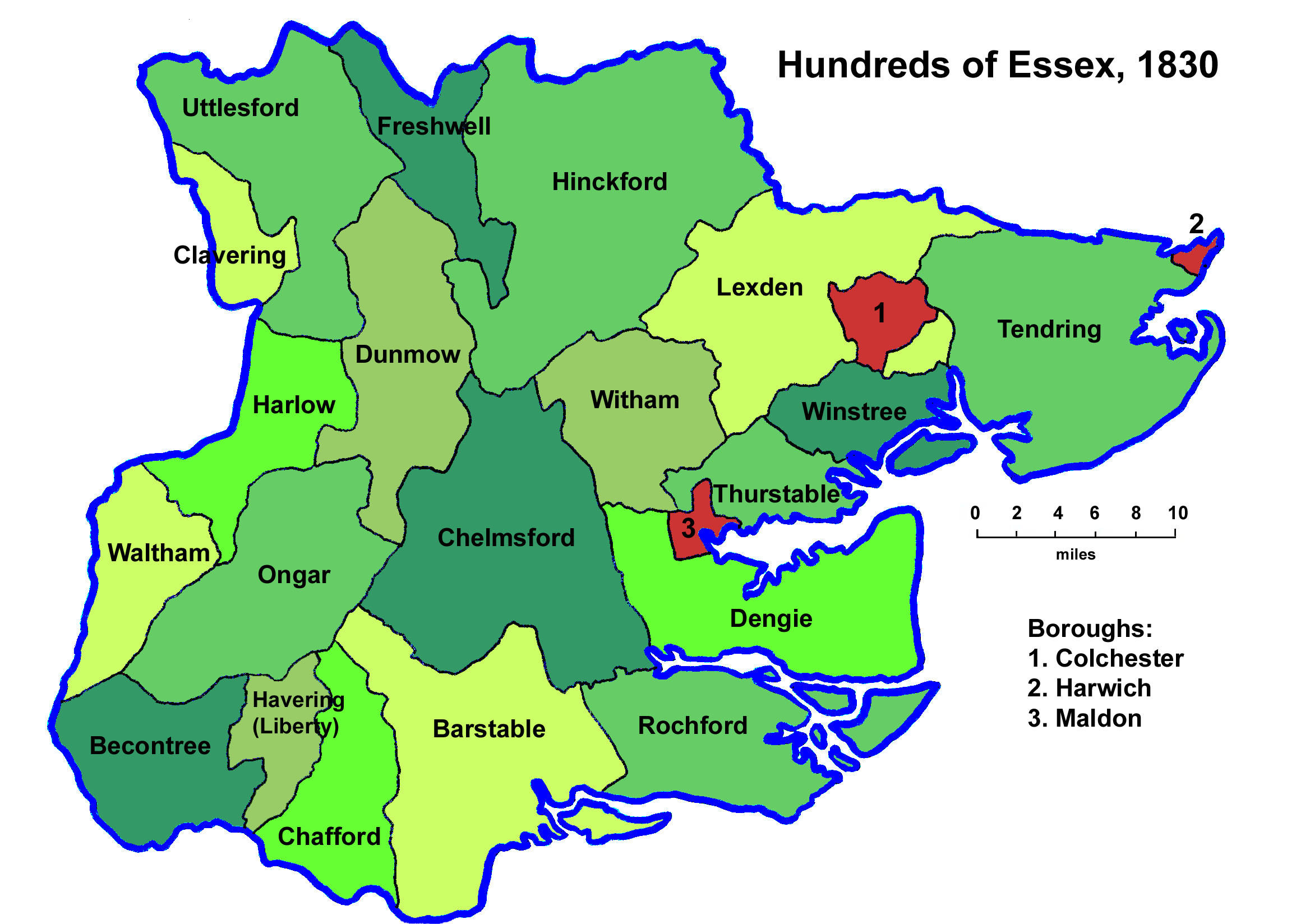|
Horndon-on-the-Hill
Horndon on the Hill is a village, former civil parish and Church of England parish in the unitary authority of Thurrock, in the county of Essex, England. It is located close to the A13, around one mile northwest of Stanford-le-Hope and around two miles northeast of Orsett. The village area falls within the Orsett ward of Thurrock District Council. In 2019 it had an estimated population of 1517. Horndon on the Hill has two churches, the Anglican Church of St Peter and St Paul, which dates from the 13th century and is Grade I listed and a Methodist Church. It also has a primary school, a recreational park and two public houses, The Swan and The Bell. History Horndon-on-the-Hill appears in the Domesday Book of 1086 as ''Hornindune'', meaning "horn-shaped hill". It may have been the site of the 11th-century Horndon mint, based on the survival of a single Anglo-Saxon penny from the village. In the late 15th century, the lord of the manors of Arden Hall and Horndon House was Sir ... [...More Info...] [...Related Items...] OR: [Wikipedia] [Google] [Baidu] |
Phil Vincent
Philip Conrad Vincent (14 March 1908 – 27 March 1979) was a British motorcycle designer and manufacturer. Founder of Vincent Motorcycles, his designs influenced the development of motorcycles around the world. Early life Philip Conrad Vincent was born in Wilbraham Gardens, Fulham on 14 March 1908. His mother, Ada Vincent, travelled back from Argentina to have her children in order to secure British citizenship. The family owned a cattle ranch between Monte Buey and Monte Maize, in the province of Córdoba, Argentina. His education began at St. George's, a British Preparatory School in Quilmes, a suburb of Buenos Aires. He was sent back to England to live with his uncle, John Vincent, who was a veterinary surgeon and lived at High House, Horndon on the Hill, Essex. Philip's education was continued there together with his two sisters, Gwendoline & Marjorie, a cousin and four other local children. He spent a year at Downsend Preparatory School, Leatherhead. He was then accep ... [...More Info...] [...Related Items...] OR: [Wikipedia] [Google] [Baidu] |
A13 Road (England)
The A13 is a major road in England linking Central London with east London and south Essex. Its route is similar to that of the London, Tilbury and Southend line via Rainham, Grays, Tilbury, Stanford-Le-Hope & Pitsea, and runs the entire length of the northern Thames Gateway area, terminating on the Thames Estuary at Shoeburyness. It is a trunk road between London and the Tilbury junction, a primary route between there and Sadlers Hall Farm near South Benfleet, and a non-primary route between there and Shoeburyness. Route London The A13 used to start at Aldgate Pump; but now begins at the junction with the A11 at what used to be the Aldgate one way system in east London and heads eastwards through the boroughs of Tower Hamlets, Newham, Barking & Dagenham and Havering before reaching the Greater London boundary. Commercial Road and East India Dock Road At the central London end, Commercial Road and East India Dock Road form one of two main arteries through the historic E ... [...More Info...] [...Related Items...] OR: [Wikipedia] [Google] [Baidu] |
Thurrock
Thurrock () is a unitary authorities of England, unitary authority area with Borough status in the United Kingdom, borough status in the Ceremonial counties of England, ceremonial county of Essex, England. It lies on the north bank of the River Thames immediately east of London and has over of riverfront including the Port of Tilbury, the principal port for London. Thurrock is within the London commuter belt and is an area of regeneration within the Thames Gateway redevelopment zone. The borough includes the northern ends of the Dartford Crossing. The local authority is Thurrock Council, based in Grays, Essex, Grays. The borough also includes Purfleet-on-Thames, South Ockendon, Stanford-le-Hope and Tilbury, as well as other villages and surrounding areas. More than half of the borough is designated as Green Belt. The neighbouring districts are the London Borough of Havering, Borough of Brentwood, Brentwood, Borough of Basildon, Basildon and Castle Point. On the opposite side o ... [...More Info...] [...Related Items...] OR: [Wikipedia] [Google] [Baidu] |
John Tusa
Sir John Tusa (born 2 March 1936) is a British arts administrator, and radio and television journalist. He is co-chairman of the European Union Youth Orchestra from 2014. chairman, British Architecture Trust Board, RIBA, from 2014. From 1980 to 1986, he was a main presenter of BBC2's ''Newsnight''. From 1986 to 1993, he was managing director of the BBC World Service. From 1995 to 2007, he was managing director of the City of London's Barbican Arts Centre. Early life Born in Zlín, Czechoslovakia, in March 1936, Tusa moved to England with his family in 1939. His father, also John Tusa (Jan Tůša), was managing director of British Bata Shoes, established by the Czechoslovak shoe company, which, following its international pattern, also created a pioneering work-living community around its factory in East Tilbury, Essex. Two days before the German occupation of Czechoslovakia on 15 March 1939, Tusa senior flew out of Czechoslovakia on a Bata company plane, via Poland, Yugosla ... [...More Info...] [...Related Items...] OR: [Wikipedia] [Google] [Baidu] |
Orsett Rural District
Orsett Rural District was a local government district centred on Orsett in the south Essex part of the Thames Estuary in England. It was a rural district from 1894 to 1936, initially made up of seventeen civil parishes and the successor to the Orsett Rural Sanitary District. Parts of the district were split off to form Tilbury in 1912, Purfleet in 1929 and Billericay in 1934. Thurrock Urban District was the main successor district in 1936. Today it corresponds to the Thurrock unitary authority area with parts in Basildon, Essex and Havering, Greater London. Background The parishes which formed the rural district in 1894 had been grouped into the Orsett Poor Law Union since 1835 following the Poor Law Amendment Act 1834. The area of the poor law union also became a rural sanitary district in 1875. In 1894 the rural sanitary district became Orsett Rural District as part of the Local Government Act 1894. Coverage The district comprised the parishes of: *Aveley (until 1929) * Bul ... [...More Info...] [...Related Items...] OR: [Wikipedia] [Google] [Baidu] |
Barstable Hundred
Barstable was a Hundred in the English County of Essex. Both the hundred and the manor with the same name are mentioned in the Domesday Book of 1086. Several parishes in the western part of the Barstable Hundred are now in Thurrock. Location Barstable is bordered on the east by Rochford hundred; on the north by Chelmsford hundred; on the north-west by the Ongar hundred; on the west by Chafford hundred (with the boundary in part following the Mardyke) and on the south by the river Thames. The parish boundary between Grays Thurrock and Little Thurrock is also the hundred boundary between Barstable and Chafford. The interlocking boundary between these parishes suggests the existence of a common pasture originally shared, prior to the establishment of the hundred boundary. Name The name of the hundred was normally that of its meeting place. Barstaple hundred takes its name from a location or settlement that is now in Basildon, a new town. This is mentioned as the manor of Barstable H ... [...More Info...] [...Related Items...] OR: [Wikipedia] [Google] [Baidu] |
List Of Church Of England Churches In Thurrock ...
Thurrock contains 17 parish churches for traditional Church of England parishes that were in existence before 1850. There are a further five parishes, parts of which are within Thurrock, but for which the parish church lies outside the Thurrock unitary authority. During the 19th and 20th centuries, reorganisation created new parishes and churches whilst other parishes were amalgamated and buildings made redundant. References {{DEFAULTSORT:Church Of England Churches In Thurrock, List Of Thurrock Thurrock () is a unitary authorities of England, unitary authority area with Borough status in the United Kingdom, borough status in the Ceremonial counties of England, ceremonial county of Essex, England. It lies on the north bank of the River ... [...More Info...] [...Related Items...] OR: [Wikipedia] [Google] [Baidu] |
Thurrock Urban District
Thurrock was a local government district and civil parish in south Essex, England from 1936 to 1974. Background The district was created as a consequence of the Local Government Act 1929, which compelled county councils to review county districts and make recommendations for changes to the Minister of Health for approval. The subject of amalgamation of riverside parishes was not new, with an unsuccessful proposal in 1911 to expand Grays Urban District to include Chadwell St Mary, Little Thurrock, West Thurrock and part of Stifford. In March 1931, Essex County Council convened a conference of local authorities in the area to solicit their views. The council suggested the breaking up of Orsett Rural District and the enlargement of the existing urban districts of Purfleet (gaining North Ockendon) and Grays Thurrock (gaining Stifford and part of Little Thurrock). Tilbury urban district would be absorbed by a new Orsett urban district formed from the remainder of the rural district. ... [...More Info...] [...Related Items...] OR: [Wikipedia] [Google] [Baidu] |
Orsett
Orsett is a village, Ward (electoral subdivision), ward, former civil parish and ecclesiastical parish located within Thurrock unitary district in Essex, England, it is north-east of Grays, Essex, Grays. In 2011 the ward had a population of 6,115. History It has historically been a primarily agricultural community situated at the southern edge of the old ice age flood plain traversed by the river Mardyke (river), Mardyke. Orsett contains a ring and bailey earthworks (Archaeology), earthwork known locally as Bishop Bonner's palace; so called as it was the residence of the Bishops of London, including Bishop Edmund Bonner from 1553 to 1559. On the gravel terrace, there is a Neolithic causewayed enclosure discovered as a result of Cropmark, crop marks which showed on aerial photography, aerial photographs taken by Kenneth St Joseph, St Joseph of Cambridge University. It has three concentric ditches with a number of breaks or causeways. The enclosure was used as a burial ground by ... [...More Info...] [...Related Items...] OR: [Wikipedia] [Google] [Baidu] |
Hundreds Of Essex
Between Anglo-Saxon times and the nineteenth century the English county of Essex was divided for administrative purposes into 19 hundreds, plus the Liberty of Havering-atte-Bower and the boroughs of Colchester, Harwich, and Maldon. Each hundred had a separate council that met each month to rule on local judicial and taxation matters. Essex probably originated as a shire in the time of Æthelstan. The Domesday Survey listed nineteen hundreds, corresponding very closely in extent and in name with those that were in use until early in the twentieth century. The additional half-hundred of Thunreslan on the border with Suffolk no longer exists, and the hundred of Witbrictesherna was renamed Dengie. The liberty of Havering-atte-Bower was formed from land taken from Becontree hundred. In the time of Edward I, Clavering and Freshwell were each considered half-hundreds in Essex. Parishes At the start of the 19th century, the hundreds contained the following parishes: References See ... [...More Info...] [...Related Items...] OR: [Wikipedia] [Google] [Baidu] |
Horndon Mint
The Horndon mint was an Anglo-Saxon mint established at Horndon-on-the-Hill in Thurrock, Essex. It is known from a single coin of the reign of Edward the Confessor. The only surviving example of a coin from the Horndon mint was among the hoard of coins found in the 18th century in a basement near St Mary-at-Hill church, in the ward of Billingsgate, London, England. The coin is described as being of the sovereign/martlet type, with the head of the sovereign and a martlet mint mark; it was minted between 1056 and 1059. It bears the inscription ''Dudinc on Hornidune'' on the reverse. Hornidune is the earliest recorded form of Horndon, which appears in the Domesday Book of 1086 as Horniduna. The moneyer, Dudinc, has the same name as someone striking coins in London for Harold Harefoot and Edward the Confessor. There is an "almost inescapable" conclusion that they were the same man. From the reign of King Edgar onwards many mints were established to meet the need for new coins when t ... [...More Info...] [...Related Items...] OR: [Wikipedia] [Google] [Baidu] |
Villages In Essex
A village is a human settlement or Residential community, community, larger than a hamlet (place), hamlet but smaller than a town with a population typically ranging from a few hundred to a few thousand. Although villages are often located in rural areas, the term urban village is also applied to certain urban neighborhoods. Villages are normally permanent, with fixed dwellings; however, transient villages can occur. Further, the dwellings of a village are fairly close to one another, not scattered broadly over the landscape, as a dispersed settlement. In the past, villages were a usual form of community for societies that practice subsistence agriculture and also for some non-agricultural societies. In Great Britain, a hamlet earned the right to be called a village when it built a Church (building), church. [...More Info...] [...Related Items...] OR: [Wikipedia] [Google] [Baidu] |




